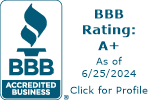aBampy Turned Everything Up a Notch or Two 
Well, Isn't That Just Ducky?
I want to tell you a fun little story about one of our favorite customers—a leading duck farm that’s been setting the standard for animal care for years. They’ve got a system down that keeps their ducks happy, healthy, and thriving. These ducks are raised free-run in large, spacious barns with all the fresh air, water, and natural feed they could ever want.
A Safe and Comfortable Environment
But with all that attention to care, they needed a way to keep their ducks safe while maintaining that open, breathable environment. Enter our Welded 14 GA 1x1 48x100 Bonded Black Vinyl Coated wire mesh, made in Italy (because even their ducks deserve a little luxury!).
This tough, durable mesh is perfect for securing barns from predators while allowing plenty of fresh air and space for the ducks to roam. It’s the ideal solution for a farm that prioritizes both safety and comfort.
The Perfect Fencing Solution
The result? Safe, happy ducks in a pristine environment—exactly what they strive for as leaders in animal care.
So, whether you’re looking to protect your ducks, chickens, or any other animals, we’ve got the right fencing solution for you. Strong, reliable, and perfectly designed to provide security without compromising on comfort.
Let’s Find Your Perfect Fit
Got questions? Terry, our fence expert, is here to help you find the perfect fit for your project. Call Terry at 978-486-3116 (Tap to Call).
All my best regards in gratitude,
Debbie Page
CEO, Louis E. Page Inc – Woman-owned business and Family-owned since 1893. (That’s right! A little more than 131 years ago our family ancestor Louis Everett Page founded the company in Boston.)
P.S. Let’s make sure your animals are safe and happy with the perfect fencing solution!








